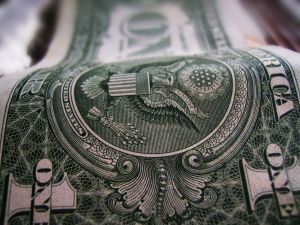Japanese Yen and Swiss Franc: Thriving During Uncertainty
Due to structurally low interest rates in Japan and Switzerland, the yen and the franc often served as funding currencies, used by speculators to borrow in lower rates and invest the proceeds in higher-yielding currencies and other assets such as gold, oil, and equities. Both the yen and franc have commanded interest rates lower than those in other G10 nations mainly due to their expanding current account surplus. A surplus in the current account signifies that both countries’ exports of goods and services are greater than their imports. It also tells us that both nations are net savers— in other words, creditors of capital—rather than net investors or debtors, thereby not requiring their interest rates to be as high as the rest of the G10 economies experiencing current account deficits.
By contrast, countries with high current account deficits such as the United States or the United Kingdom command higher interest rates because they require capital from abroad to finance these deficits. The capital consists of foreign purchases of U.S. and UK financial assets such as stocks and bonds. Generally, the wider the current account deficit, the higher the required financing from abroad and the higher the cost of financing—hence the interest rate. These interest rates are of 5- to 10-year durations rather than the overnight benchmark rates controlled by the central banks.
Just as a person with $20,000 in credit card debt is more likely to be charged a higher interest rate than someone with a $2,000 credit debt, current account deficit nations incur higher interest rates and their currencies are said to be riskier than those of current account surplus nations. Foreign investors require a higher rate of return to compensate for the risk of buying assets from debtor nations.
The figure illustrates this point via the clearly inverse relationship between current account balances and interest rates. New Zealand, the United States, Australia, and the United Kingdom each have current account deficits and boast higher interest rates than in Japan and Switzerland, whose lower interest rates are explained by current account surplus balances. Canada is the exception to the rule in that its interest rates were as high as those in current account deficit nations despite boasting current account surplus. When Canada’s current account balance became positive in early 2000, interest rates fell from 5.75 percent in 2000 to 2.0 percent in 2002. But the subsequent rebound in oil prices boosted the nation’s economy by bolstering its current account balance, ultimately fueling inflation and forcing the central bank to raise interest rates.
Yet the relationship between current account balances and interest rates remains clear. Since carry trades involve the purchase of higher interest rate currencies against lower interest rate currencies, they are considered risk-seeking trades, or reflective of rising risk appetite. Such risky trades are therefore vulnerable to any negative developments that create fear in the market, causing investors to scale down their risky bets by shifting funds back to yen and francs to repay their low interest rate loans, ultimately boosting the two currencies against their higher-yielding counterparts. An illustration of the development in global interest rates such as in the chart helps investors determine the ensuing opportunities obtained from interest rate differentials.





Hey,
This is awesome blog, love it!